The Tropic Snow Dieffenbachia is truly a sight to behold with its stunning variegated leaves. The silvery-green foliage is adorned with cream, yellow, or white spots, creating a snow-like appearance that captivates the eye. The leaves of this plant are pointed and ovate in shape, adding an elegant touch to its overall appearance.
No products found.
Appearance of Tropic Snow Dieffenbachia

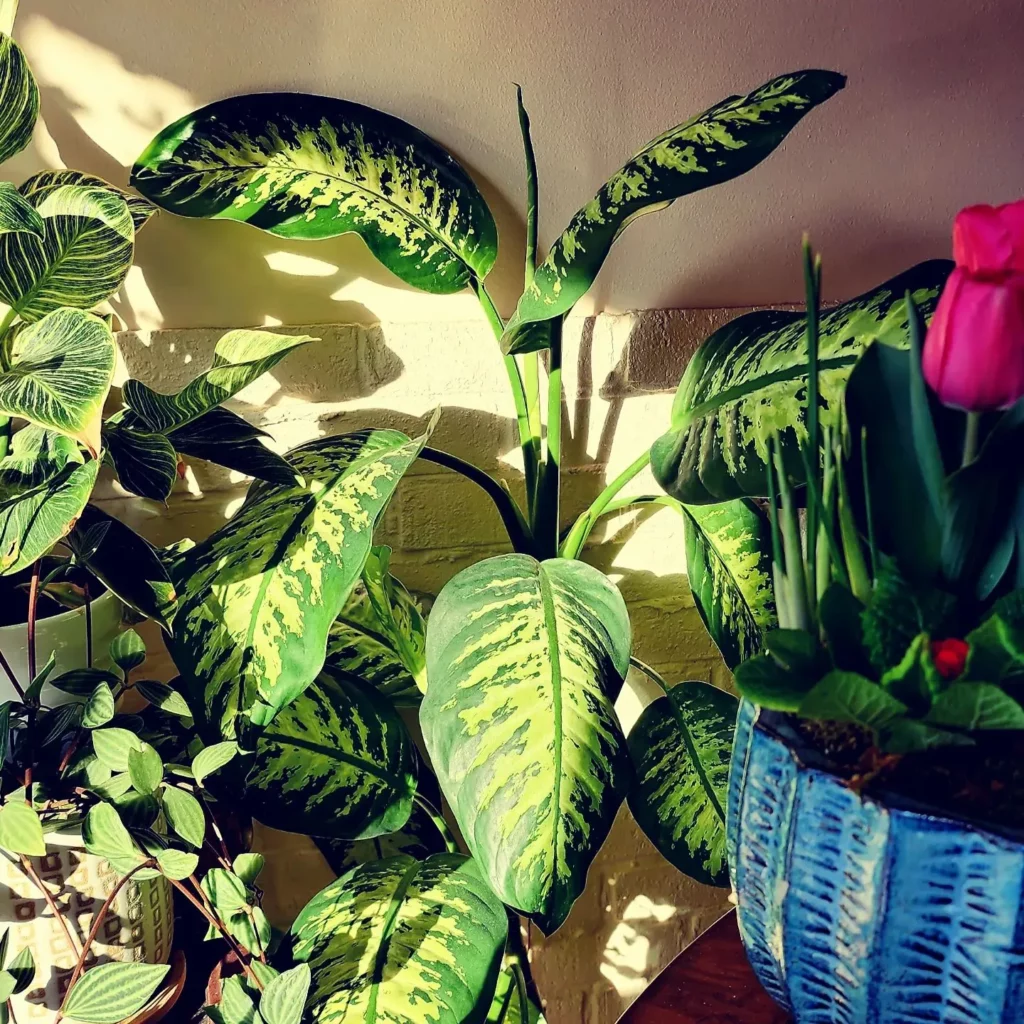
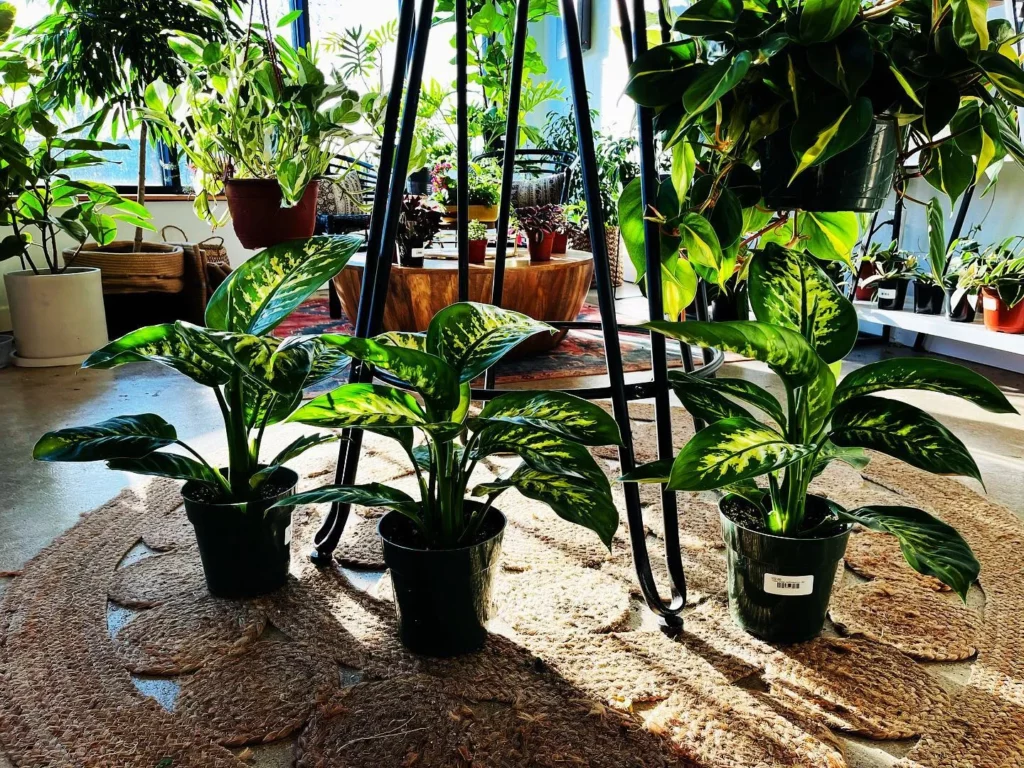
No products found.
Indoors, the Tropic Snow Dieffenbachia can reach heights of up to 3 feet, making it a striking addition to any indoor garden or space. Its vibrant and variegated leaves bring a splash of color and a tropical flair to your surroundings, instantly transforming your environment into a lush oasis.
Light Requirements for Tropic Snow Dieffenbachia
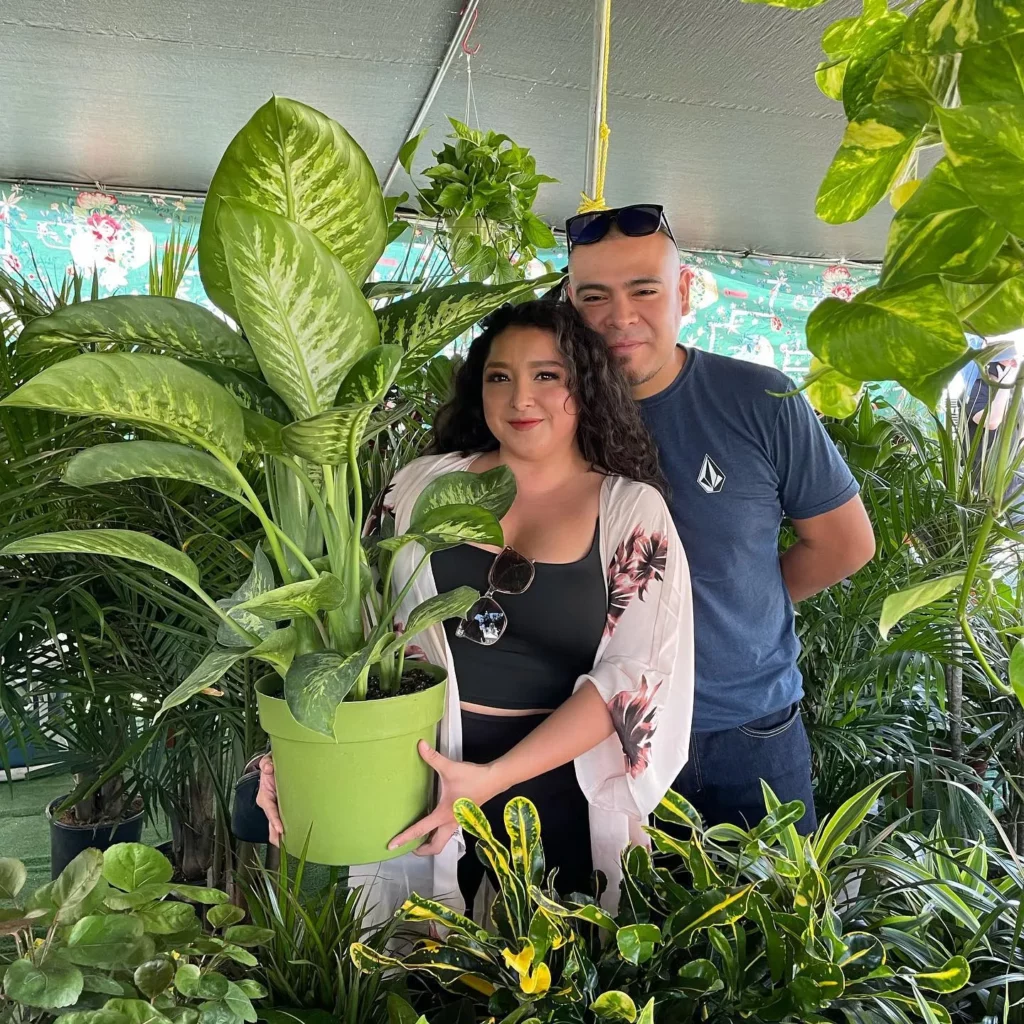
Proper lighting is crucial for the health and vibrancy of the Tropic Snow Dieffenbachia. This stunning plant thrives in bright, indirect light, making it the perfect addition to any well-lit space. To ensure optimal growth and maintain the beautiful coloration of its leaves, it’s best to place the Tropic Snow Dieffenbachia near an east or west-facing window where it can receive filtered sunlight.
No products found.
Direct sunlight can be too intense for this delicate plant and may result in leaf scorching. On the other hand, insufficient light can lead to leggy growth and a loss of variegation. By positioning your Tropic Snow Dieffenbachia in bright, indirect light, you’ll provide it with the perfect balance of illumination, allowing it to thrive and showcase its vibrant foliage.
Watering Tropic Snow Dieffenbachia

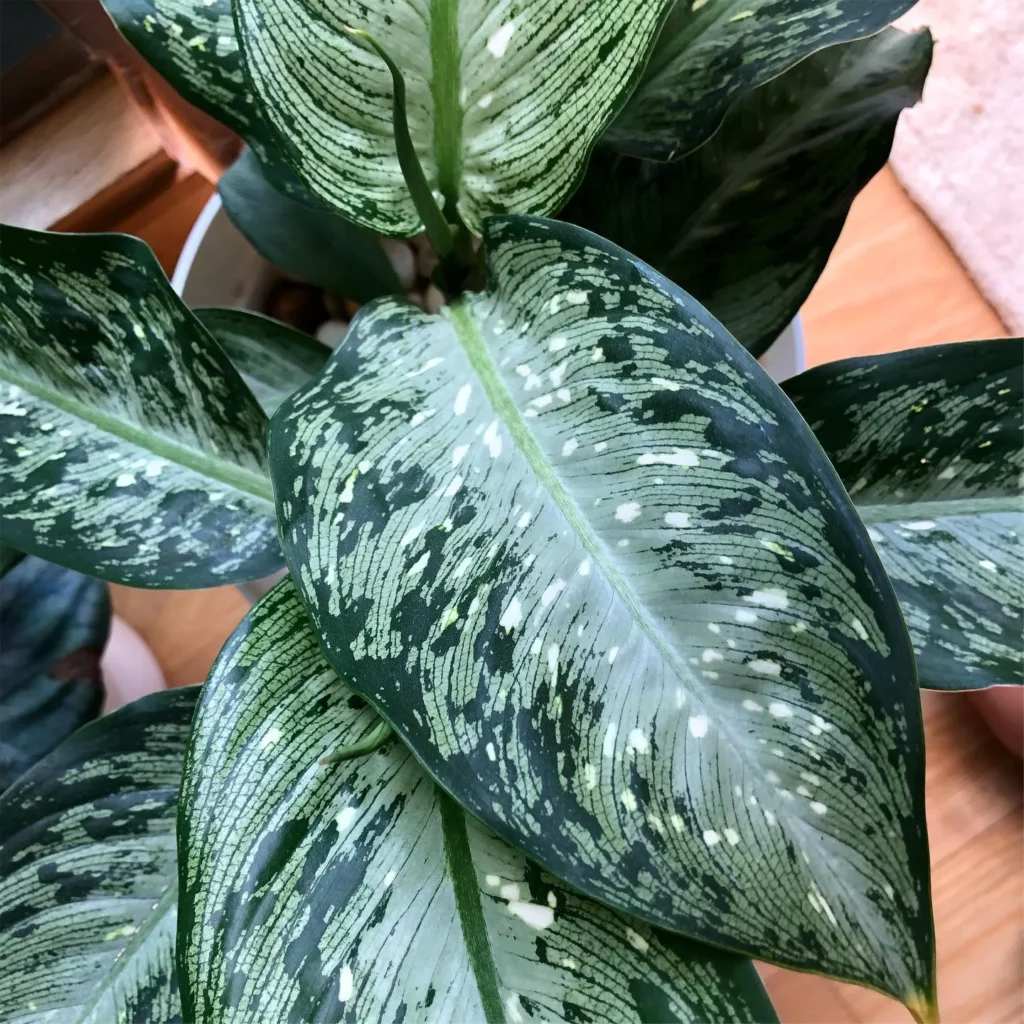

Proper watering is essential for the health and well-being of your Tropic Snow Dieffenbachia. It’s important to strike a delicate balance when it comes to watering this plant. The Dieffenbachia prefers its soil to be consistently moist, but not waterlogged.
No products found.
Water your Tropic Snow Dieffenbachia when the top inch of the soil feels dry to the touch. This is usually about once a week, but may vary depending on environmental factors such as temperature and humidity. By allowing the soil to partially dry out between waterings, you prevent the risk of overwatering and ensure the plant’s roots receive enough oxygen.
When watering, it’s crucial to provide good drainage for your Tropic Snow Dieffenbachia. Excessive moisture can lead to root rot and other issues. Use a well-draining potting mix and ensure that the pot has drainage holes to allow excess water to escape. This promotes a healthy root system and minimizes the risk of waterlogged soil.
Fertilizing Tropic Snow Dieffenbachia

Fertilizing the Tropic Snow Dieffenbachia is crucial to maintain its lush and vibrant foliage. To keep your plant healthy and thriving, it is recommended to feed it with a balanced, water-soluble fertilizer. During the growing season, which usually spans from spring to summer, apply the fertilizer monthly to provide the plant with the necessary nutrients for optimal growth.
No products found.
Using a balanced fertilizer ensures that the Tropic Snow Dieffenbachia receives the right combination of essential elements. This helps support its overall health and encourage vigorous foliage development. When selecting a fertilizer, choose a water-soluble option that is suitable for indoor houseplants. This type of fertilizer can be easily dissolved in water, making it convenient and efficient for the plant’s nutrient uptake.
When applying the fertilizer, be sure to follow the instructions provided on the packaging. This will guide you on the proper dosage and application method specific to the fertilizer you have chosen. It is important to avoid overfertilizing, as this can lead to unhealthy growth and potential damage to the plant.
Potting Tropic Snow Dieffenbachia

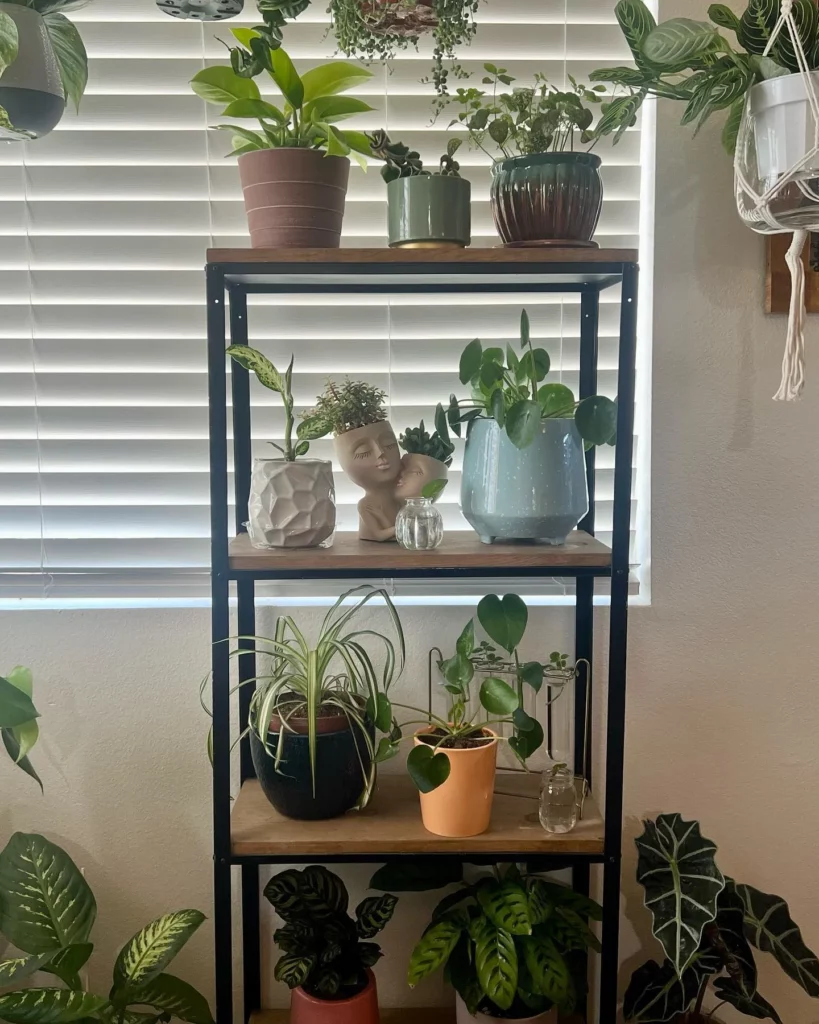

Repotting is essential for maintaining the health and vitality of your Tropic Snow Dieffenbachia. It’s recommended to repot the plant every two to three years or when it becomes root-bound. This process allows the plant to have enough space for proper root development and prevents it from becoming pot-bound.
When selecting a new pot for your Dieffenbachia, choose one that is slightly larger than the current pot. This will provide ample room for the roots to grow and spread. Ensure that the pot has good drainage holes to allow excess water to escape.
In order to promote healthy root growth, it’s important to use a well-draining potting mix when repotting your Tropic Snow Dieffenbachia. A well-draining potting mix allows water to flow freely through the soil, preventing waterlogging and potential root rot issues. You can create a well-draining mix by combining equal parts of peat moss, perlite, and sand.
Here are the steps to repot your Tropic Snow Dieffenbachia:
- Carefully remove the plant from its current pot, taking care not to damage the roots.
- Gently loosen the roots to encourage new growth and remove any dead or rotted roots.
- Place a layer of well-draining potting mix at the bottom of the new pot.
- Position the plant in the center of the pot and fill with the potting mix, ensuring that the plant is at the same level as it was in the previous pot.
- Press the soil lightly around the roots to secure the plant in place.
- Water the plant thoroughly, ensuring that the water drains out of the pot.
Propagation of Tropic Snow Dieffenbachia

Propagating the Tropic Snow Dieffenbachia is an exciting and rewarding process that allows you to expand your collection of these beautiful plants. One of the most common and effective methods of propagation is through stem cuttings.
To propagate the Tropic Snow Dieffenbachia using stem cuttings, follow these simple steps:
- Start by selecting a healthy stem on the parent plant. Ensure that it is free from any diseases or pests.
- Using a clean and sharp pair of pruning shears, make a clean cut just below a node on the selected stem. A node is the point where the leaves connect to the stem.
- Allow the cut end of the stem to callous over for about a day. This helps to prevent rotting and promotes successful rooting.
- Prepare a small pot with moist, well-draining soil. You can use a mix of peat moss and perlite or a good-quality potting mix.
- Insert the calloused end of the stem cutting into the soil, ensuring that at least one node is covered.
- Place the pot in a warm and brightly lit area, but avoid direct sunlight as it can scorch the cutting. Ideally, provide the cutting with bright indirect light.
- Keep the soil consistently moist but not waterlogged. Avoid overwatering, as this can cause rotting.
- After a few weeks, you should start to see new growth on the cutting. This indicates that it has successfully rooted and is developing into a new plant.
- Once the new plant has established a strong root system and a few sets of leaves, you can consider transplanting it into a larger pot with well-draining soil.
Growth and Development of Tropic Snow Dieffenbachia
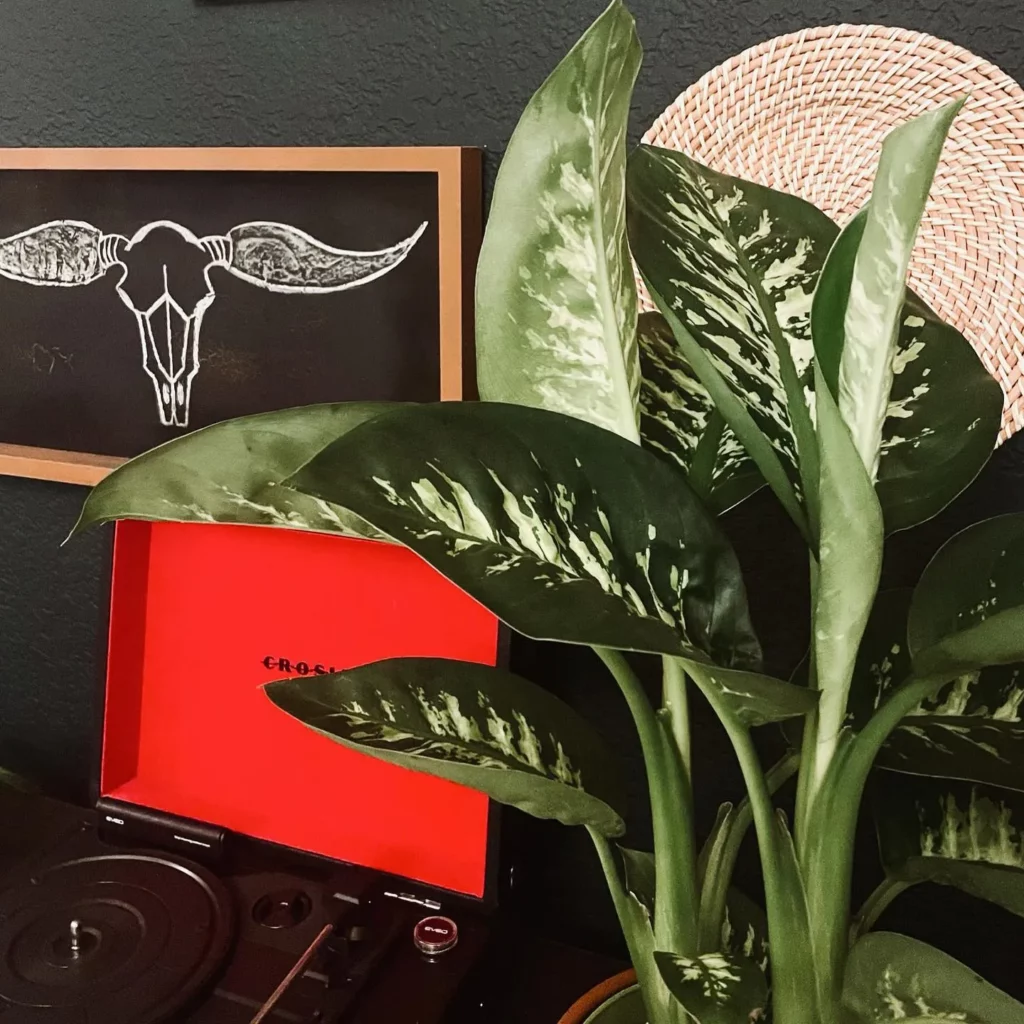


Watching the Tropic Snow Dieffenbachia grow can be incredibly rewarding. This stunning houseplant has moderate to fast growth under the right conditions, making it a favorite among indoor gardeners.
For optimal growth, it’s important to provide the Tropic Snow Dieffenbachia with the right care and conditions. Here are some key factors to consider:
- Lighting: Place the plant in a bright spot with indirect sunlight. Avoid direct sunlight as it can scorch the leaves.
- Watering: Keep the soil consistently moist, but not waterlogged. Water when the top inch of soil feels dry.
- Fertilizing: Feed the plant with a balanced, water-soluble fertilizer every month during the growing season to support its growth.
Pests and Diseases of Tropic Snow Dieffenbachia

Like any houseplant, the Tropic Snow Dieffenbachia is susceptible to pests and diseases. It’s important to be aware of these potential issues and take proactive measures to keep your plant healthy and thriving.
Common Pests
- Spider mites
- Mealybugs
- Aphids
These pests can cause damage to the leaves and overall health of the plant. Regularly inspect your Tropic Snow Dieffenbachia for any signs of infestation, such as webbing, sticky residue, or tiny insects. If you notice any pests, take immediate action to control and prevent their spread.
Preventive Measures
- Regularly clean the leaves with a damp cloth to remove any dust or debris that may attract pests.
- Isolate any new plants before introducing them to your Tropic Snow Dieffenbachia to prevent the spread of pests.
- Consider using natural pest control methods, such as neem oil or insecticidal soap, to treat and repel pests.
Common Diseases
The Tropic Snow Dieffenbachia can also be vulnerable to certain diseases if not properly cared for. Here are a few common ones to watch out for:
- Root rot, which can occur if the plant is over-watered or if the soil does not have adequate drainage.
- Fungal infections, which can develop if the plant is exposed to excessive moisture or high humidity.
Taking Care of Your Tropic Snow Dieffenbachia
To protect your plant from pests and diseases:
- Ensure proper watering practices, allowing the soil to dry out slightly between waterings to prevent over-watering and root rot.
- Provide good airflow and ventilation around the plant to reduce humidity and minimize the risk of fungal infections.
Toxicity of Tropic Snow Dieffenbachia

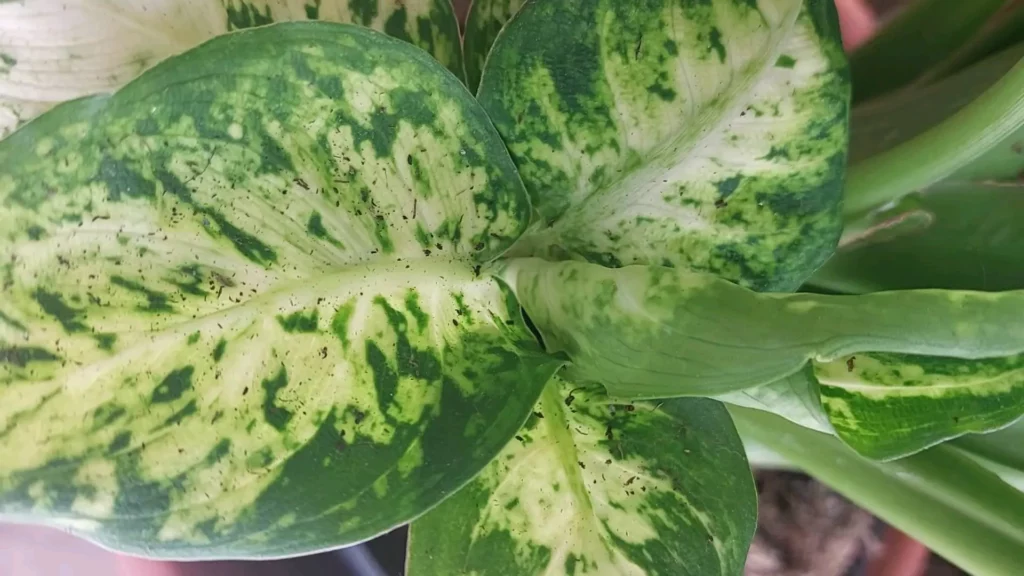

It’s important to note that the Tropic Snow Dieffenbachia is highly toxic to cats, dogs, and humans if ingested. The plant’s sap can cause irritation and swelling in the mouth and throat. It’s essential to keep the plant out of reach of pets and children to prevent any accidents. If you suspect that your pet or child has ingested any part of the plant, seek immediate medical attention.
Conclusion

Caring for a Tropic Snow Dieffenbachia is a fulfilling and rewarding experience for indoor gardeners. By following the comprehensive care guide provided, you can ensure that your plant thrives and adds a touch of tropical beauty to your indoor garden.
Remember, each Tropic Snow Dieffenbachia has its own unique journey, and as you nurture and care for your plant, you will form a special bond with it. As you provide the right lighting, watering, and environmental conditions, your Dieffenbachia will reward you with lush growth and vibrant variegated leaves.
Happy gardening, and may your home be transformed into a lush and vibrant oasis with the help of your Tropic Snow Dieffenbachia. With proper care and attention, this stunning houseplant will continue to bring joy and beauty to your indoor space for years to come.
FAQ
Is the Tropic Snow Dieffenbachia toxic?
Yes, the Tropic Snow Dieffenbachia is highly toxic to pets and children.
What is the appearance of the Tropic Snow Dieffenbachia?
The Tropic Snow Dieffenbachia has silvery-green leaves that are variegated with cream, yellow, or white spots.
What are the light requirements for the Tropic Snow Dieffenbachia?
The Tropic Snow Dieffenbachia prefers bright, indirect light.
How often should I water the Tropic Snow Dieffenbachia?
Water the Tropic Snow Dieffenbachia when the top inch of soil feels dry, typically every week or so.
How often should I fertilize the Tropic Snow Dieffenbachia?
It is recommended to fertilize the Tropic Snow Dieffenbachia every month during the growing season with a balanced, water-soluble fertilizer.
How often should I repot the Tropic Snow Dieffenbachia?
Repot the Tropic Snow Dieffenbachia every two to three years or when it becomes root-bound.
How do I propagate the Tropic Snow Dieffenbachia?
Propagate the Tropic Snow Dieffenbachia through stem cuttings.
How fast does the Tropic Snow Dieffenbachia grow?
The Tropic Snow Dieffenbachia is a relatively fast grower under the right conditions.
What pests and diseases should I watch out for with the Tropic Snow Dieffenbachia?
Common pests include spider mites, mealybugs, and aphids, while diseases such as root rot and fungal infections can occur with over-watering or excessive moisture.
Is the Tropic Snow Dieffenbachia toxic to pets and children?
Yes, the Tropic Snow Dieffenbachia is highly toxic if ingested, and its sap can cause irritation and swelling in the mouth and throat.






I. Have. Three of these plants had the original for years. Love to send you some pictures.
Very helpful. Thank you sharing.